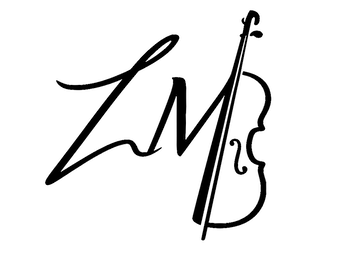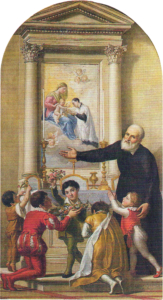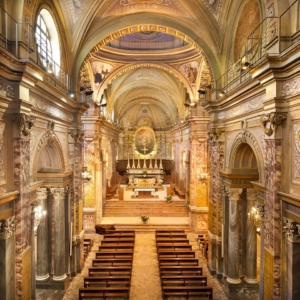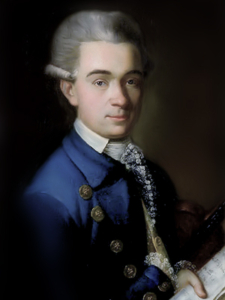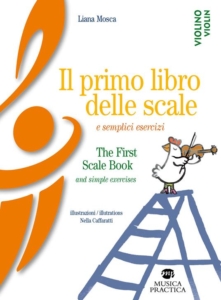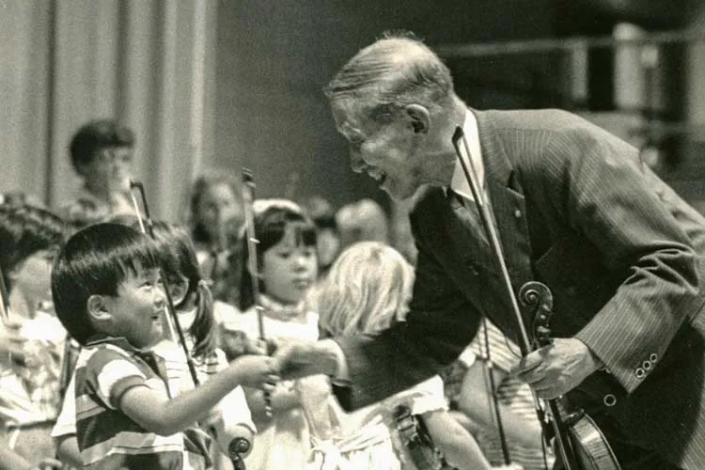Italian Suzuki Institute
The Italian Suzuki Institute was founded in 1993 and represents the network of schools and teachers who, through the method created by Dr Shinichi Suzuki, disseminate and develop music education at an early age. It is the only national interlocutor of the European Suzuki Association (ESA) of which it is a member. Today, the ISI has 40 schools, 230 teachers and over 3000 pupils.
Liana Mosca is Teacher Trainer at the ISI.
Fondazione Pistoletto – Cittadellarte
Cittadellarte is a cultural factory, a hub, an extended community of thinkers, administrators, and innovators from all fields: a collective artistic project.
The Pistoletto Cittadellarte Foundation is a new model of artistic and cultural institution that involves art in different sectors of society as an enzyme of transformation based on the freedom/responsibility duality. As such, it differs from academies and museums by developing, alongside its well-established exhibition and educational functions, an art directly engaged in the responsible transformation of society.
Ivrea Cathedral
The Cathedral of Santa Maria Assunta in Ivrea was erected in the highest part of the city, in a space dedicated to worship since ancient times, replacing a Roman temple presumably towards the end of the 4th century. Over the centuries, it was a crossroads for illustrious artists who distinguished themselves both as performers and composers in the history of music.
The Congregation of the Oratory of St. Philip Neri carries out its pastoral ministry. The first Oratory was founded in Rome by Saint Philip in 1561 as a place for gathering, prayers and Christian formation. St Philip Neri considered music an important way to bring people closer to God, a tool for the spiritual formation of young people. Through musical gatherings, sacred songs and hymns, the so-called “Spiritual Lauds”, were performed, often accompanied by musical instruments. These songs were simple, melodic and easy to sing, and were intended to educate young and old alike in the faith.
In 2024, upon the suggestion of my father Antonio Mosca, supported by the then Bishop of Ivrea, Monsignor Edoardo Cerrato, and with the support of the Ivrea Oratory Congregation, the life of the Cathedral's Musical Chapel was reactivated and implemented.
The Musical Chapel is named after “Santa Maria Assunta”, patron saint of the diocese and titular of the cathedral itself. It is made up of various ensembles (Gregorian schola, polyphonic schola, string orchestra “Yporegia”, a brass ensemble and organ) that contribute, as an ensemble or individually, to liturgical service during Vespers and Holy Masses throughout the liturgical year and especially on major feast days.
My parents have always pursued with great dedication the musical teaching of children in the Suzuki philosophy, which fits well with the education given to children by St Philip Neri. Dad and Mum are therefore patrons of this project; not to create music professionals but to educate them to be better people. From the union of the two ideas came the revival, within the project of the Musical Chapel of the Cathedral, of the string group “Yporegia”, to bring about a great communion between spirituality and music in this special place.
Of great inspiration for the children and young people of the Music Chapel is the story of little Giovanni Battista Viotti, who as a child came from Fontanetto Po to Ivrea to play the violin in the Cathedral. The little prodigy, stimulated by his father, an amateur musician, manifested his musical talent at a very early age. In 1766 he was noticed by the then Bishop of Ivrea, Monsignor Francesco Luserna Rorengo di Rorà, who sent him to Turin to continue his studies with Gaetano Pugnani.
Lessons and rehearsals:
Individual violin and cello lessons take place once a week and orchestra rehearsals are scheduled according to the liturgical life of the Cathedral. In particular, on 15 August (on the occasion of the Solemnity of Mary Assumed into Heaven, patron saint of the Diocese), the rehearsals turn into a real summer music course for string instruments, open to all 8-18 year olds.
Violin lessons cover traditional modern violin study programs as well as the study of orchestral parts, especially sacred music (for younger children, using the Suzuki method).
Special features:
The “Musical Codex of Ivrea”, an important medieval musical manuscript written in France but with elements reflecting Italian musical culture, is preserved in the Chapter Library. It is fundamental for the study of the Ars Nova and is characterised by the presence of works by authors such as Guillaume de Machaut.
San Filippo Neri
Giovanni Battista Viotti
Liana Mosca also collaborates with:
Accademia Suzuki Talent Center Turin
The Accademia Suzuki Talent Center was born in 1976 from a dream: to bring the educational method devised by the Japanese master to Italy. The pioneers of this adventure were Lee Robert, an American violist who had trained directly with Suzuki in Japan, and Antonio Mosca, an Italian cellist. Together they decided to found the first Suzuki school in Turin.
With courage and enthusiasm, Mr and Mrs Mosca started with a small class of children in Via Guastalla in Turin, also involving some children of Olivetti workers in Ivrea. Their experiment became an educational movement that would change the landscape of Italian music education forever.
Il primo libro delle scale e semplici esercizi
by Liana Mosca, illustrations by Nella Caffaratti
Edited by Musica Practica, 2021
Recommended readings
– S. Suzuki, Ability Development from Age Zero
– S. Suzuki, Where Love Is Deep
– M. Honda, Suzuki Changed my Life
– M. Ibuka, A un anno si pattina a tre si legge e si suona il violino
– E. Mills, In the Suzuki Style
– A. Thornton, A Parents Guide to the Suzuki Method
– W. & C. Starr, To Learn with Love (A Companion for Suzuki Parents)
– P. Angela, Da zero a tre anni
– H. Gardner, Formae mentis: Saggio sulla pluralità dell’intelligenza
– G. Doman, Leggere a tre anni
– G. Doman, Come moltiplicare l’intelligenza del vostro bambino
– C.H. Delacato, Problemi di apprendimento e organizzazione neurologica
– H. Brunet-Lecomte, Jacques-Dalcroze: sa vie, son œuvre
– M. Montessori, La mente del bambino
– V. Arrobbio Basso, L’influenza della musica nell’evoluzione del bambino
– M. Scaglioso, Suonare come parlare
